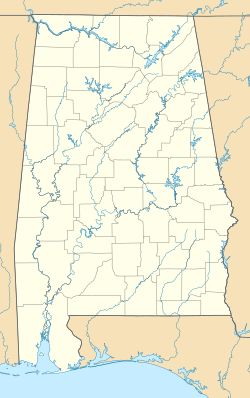Chewacla, Alabama facts for kids
Quick facts for kids
Chewacla, Alabama
|
|
|---|---|
| Country | United States |
| State | Alabama |
| County | Lee |
| Elevation | 771 ft (235 m) |
| Time zone | UTC-6 (CST) |
| • Summer (DST) | UTC-6 (EDT) |
| GNIS feature ID | 156176 |
Chewacla (say it "choo-AHK-luh"), also known as Yongesborough, is a small, unincorporated community in the northeast part of Lee County, Alabama, in the United States. An unincorporated community is a place that isn't officially a city or town with its own local government. It's usually a smaller area with a few homes or businesses.
Contents
History of Chewacla
What's in a Name?
The name Chewacla comes from an old Native American language called Hitchiti. The word sawackla meant "raccoon town." So, Chewacla is basically "Raccoon Town"!
Train Tracks and Quarries
Chewacla was once located along the Central of Georgia Railway, which was a train line. This made it a good spot for businesses. One important business there was the Chewacla Lime Works. This company operated a quarry, which is a big open pit where stone is dug out of the ground.
Special Rocks from Chewacla
At the Chewacla quarry, they mined a special type of rock called Chewacla marble. This marble was known for being a beautiful, shiny white stone. It was a type of rock called dolomite. Another type of rock, called Gneiss, was also found in the quarry. Gneiss was used to make millstones, which are large, round stones used to grind grain, like wheat into flour.
Early Schools
Chewacla was also home to one of the very first Rosenwald schools in Alabama. These schools were built in the early 1900s to provide better education for African American children in the Southern United States. They were funded by a partnership between Booker T. Washington and Julius Rosenwald.
Post Office Names
The community had a post office that changed its name over the years. From 1859 to 1886, it was called Yongesborough. Then, from 1886 to 1907, it was known as Chewacla.
Gallery
Here are some old photographs taken in Chewacla. They were part of a project called the Historic American Buildings Survey, which records important old buildings and places.








